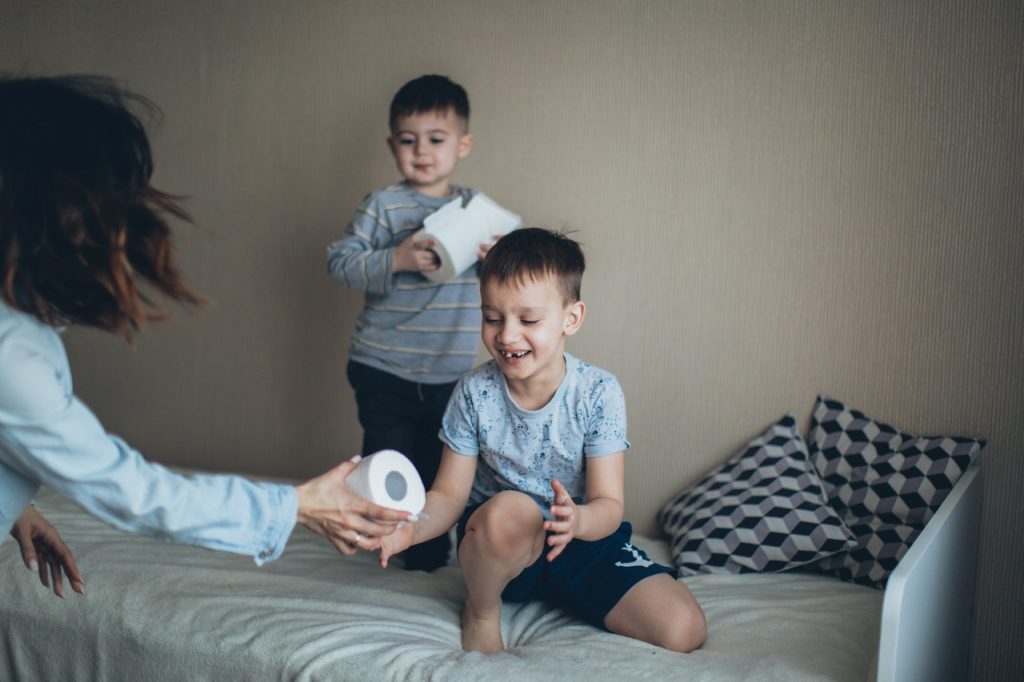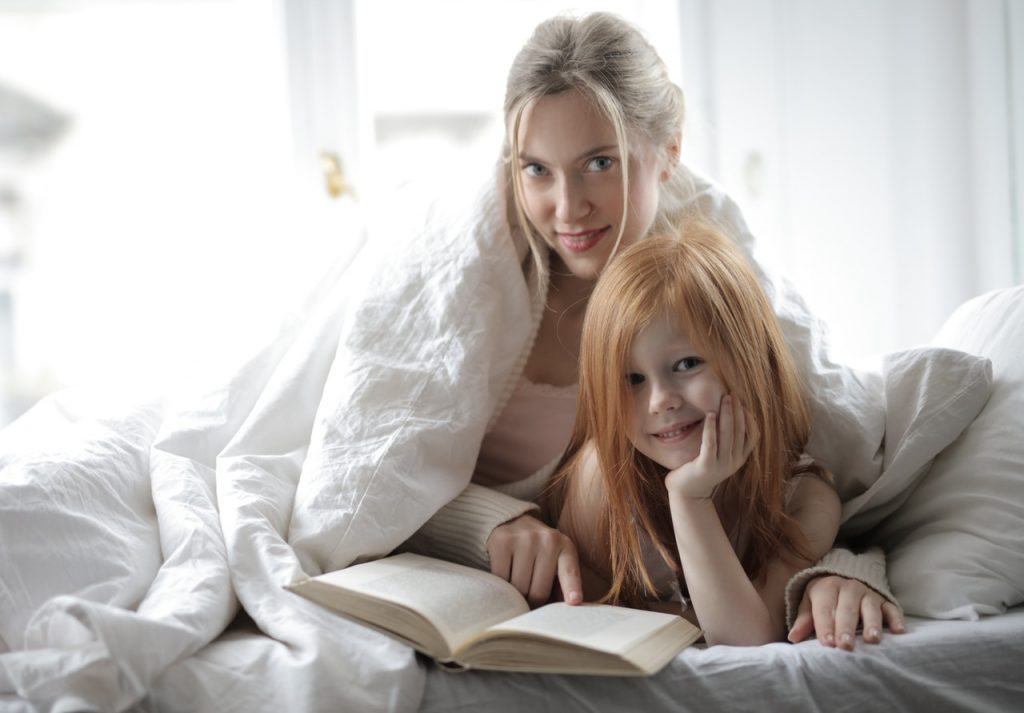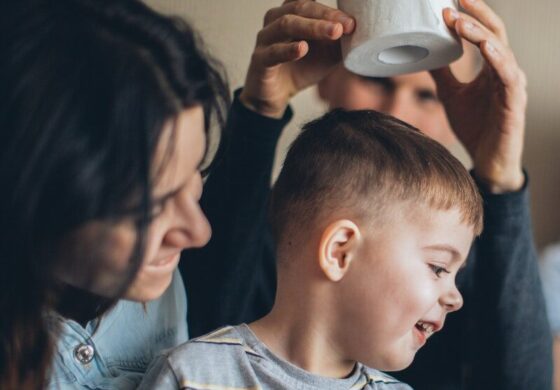Hitting developmental milestones is both an exciting and challenging time for caregivers and children. One of the most pivotal ones is potty training- the ever-discussed and often dreaded hurdle in development.

While no potty training experience is the same, there are several common challenges that tend to exist while caregivers are going through coaching potty skills. Most importantly, know that there is no “right way” to potty train the child in your household, but there are several tips and tricks that can make this important time easier.
In this article, we discuss common challenges to overcome when potty training. Consider this your handy guide for when the time comes.

Problem 1: Your child resists going to the potty.
Solution: Your child may not want to interrupt the fun they’re having at that moment, but if this happens repeatedly and consistently, it may be a sign they’re not ready for this milestone. Using the toilet like a grown-up is a complex task that requires the development and maturity of the central nervous system and typically develops between the ages of 2-3. Unsure if your child is ready? Here are some signs:
- can dress and undress without help
- can sit still for a few minutes
- notices when they have a wet or soiled diaper
- tells you when they need to pee or poop
- is willing to interrupt activities to have their diaper changed
- imitates toileting behaviors of grown-ups in the house
- able to follow simple instructions
- enjoys putting things into containers
- insists on completing tasks without help and is proud of their achievements
Problem 2: Your child has accidents.
Solution: It seems counterintuitive but you want your child to have some leakages (we don’t like the term accidents!) when they’re first learning this skill. Think back to when your child learned to walk. They fell a lot in the beginning, as their balance was maturing and as they learned to push the boundaries of it. But gradually, the number of falls decreased and now they probably fall infrequently. Potty training follows the same development. They are learning to use muscles in their pelvis in a way they’ve never had to before and it will take some time and some practice to perfect this coordination. When they do experience a leakage, be kind, be patient, and talk about what your child just felt inside their body to help them learn from the experience. “Your bladder just leaked! Did you feel a sensation in your belly before the pee came out? Next time you feel that, let’s try sitting on the potty right away!” Place the onus of the leakage on the body part, not the child, and stress the sensation they felt beforehand so they can learn from the experience.
Problem 3: Your child will pee in the potty consistently but not poop.
Solution: This is a fairly common issue at the beginning of potty training. The pee comes but the poop doesn’t. This can happen for several reasons but let’s start with what happens physiologically inside the body. As the bladder fills, it will send a signal to the brain saying I’m getting full, let’s empty. Our brain can decide yes now is a good time or no it’s not a good time, hold it a while longer. If we decide to hold, the bladder will continue to fill and will send another urge signal up to the brain and once again, the brain will decide yes now is a good time or no it’s not a good time. At some point, however, it will start to become painful and shortly after, the bladder will reach its max capacity and automatically empty. This happens several times throughout the day so your child gets this signal multiple times a day, every day, since about the age of 1-2. The rectum operates completely differently. It doesn’t automatically empty and it doesn’t empty as frequently, so it takes more body awareness and more bodily coordination to learn to empty our bowels. Your rectum also has the ability to decide to not empty (subconsciously with no awareness from the child) and to hold onto poop for a long time (weeks, months, or even years). This means it may take longer for your child to learn this skill.
Problem 4: Your child will pee on the potty but wants a diaper for bowel movements.
Solution: Some children who are successfully peeing on the toilet may prefer to keep pooping in a diaper. It’s preferable to let them continue to use diapers temporarily rather than risk them holding it in or refusing to go and developing severe constipation. Ideally, have them remain in the bathroom and on the potty when they go in their diaper, but this may be something to work towards rather than a starting place. Once they’ve pooped in the diaper, have them watch, or help, you dump the contents into the toilet and flush, and then wash their hands to encourage toileting hygiene. Keep encouraging them to verbalize the sensation to go and accompany them to the bathroom. Most children outgrow this behavior without any intervention within 6 months.
Problem 5: Your child gets upset over the toilet flushing.
Solution: There are several factors that might be at play here. Some children feel like their poop is a part of their body and they may be upset to see it go away. There is an app called Poo Goes To Pooland, which might help with this. It describes the poop as going home to their family and watching this story and waving bye-bye may solve the problem. Other children are afraid they’re going to get sucked down the toilet when it’s flushed. You can try placing large objects in the clean toilet beforehand and flushing it with your child so they can see that not everything gets sucked down and they are safe. Other children don’t like the noise. You can try easing them into it by allowing them to leave the room entirely for the first week before you flush, then gradually having them stand closer and closer to the toilet until they are ready to flush themselves. If your child is currently in occupational therapy, mention this to their therapist!
Problem 6: Your child is dry during the day but still pees overnight.
Solution: This is completely normal for up to a year after daytime dryness develops! If this lingers past a year, reach out to your pediatrician or a pelvic floor therapist for help. It may be genetic but it can also be a sign of constipation, hormone imbalance, food intolerances, or more.
If you have more questions or are interested in learning more about our Tiny Toilets program, schedule a free consultation with our pelvic floor specialist!

